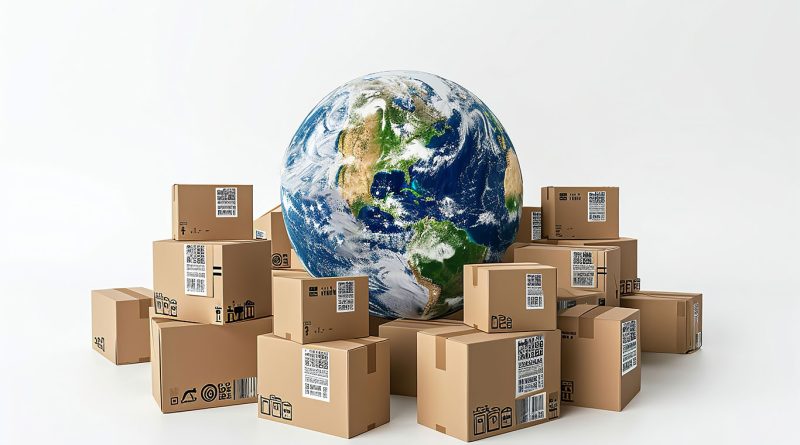Global Shipping Faces First Carbon Tax Under IMO Climate Rules
Subscribe to our free newsletter today to keep up-to-date with the latest transportation and logistics news.
In a landmark move, the International Maritime Organization has approved the first global emissions pricing mechanism for the shipping industry. This decision represents a significant shift in the global climate policy landscape, introducing binding regulations to one of the last major unregulated carbon emitters.
The decision follows years of pressure from environmental coalitions, international governments, and shipping stakeholders calling for stricter emissions accountability. Historically, shipping was exempt from global climate frameworks like the Paris Agreement due to its international nature. The recent mandate, however, marks a policy realignment where maritime transport is now directly accountable for its carbon footprint.
With over 90 percent of global trade carried by sea, the maritime sector accounts for nearly 3 percent of total global greenhouse gas emissions. The newly introduced carbon pricing system aims to regulate this impact by tying financial penalties to emissions levels. The adoption of this system aligns with a broader trend of integrating environmental costs into global economic activity.
What the carbon pricing mechanism entails
The IMO’s emissions pricing mechanism will begin its implementation phase in 2027, with full enforcement expected in 2028. Ships that exceed emissions thresholds will be subject to financial penalties, creating a direct incentive to invest in cleaner technologies and operations.
The mechanism applies primarily to vessels engaged in international shipping routes. Ships will be required to report their fuel use and emissions output, which will be assessed against IMO-defined benchmarks. If emissions exceed the allowable threshold, operators must pay a surcharge calculated by tonnage and voyage distance.
Unlike market-based systems such as the European Union’s Emissions Trading System, this pricing model functions more like a direct levy. It simplifies enforcement while maintaining flexibility for different vessel classes and voyage types. IMO member states have also agreed on an auditing process to ensure compliance across jurisdictions.
The policy includes safeguards to avoid penalizing developing nations that depend heavily on shipping. Transitional measures are in place to prevent market shocks and ensure that the carbon cost does not disproportionately affect low-income economies.
The road to net-zero and how shipping fits into global targets
The IMO has committed to reducing carbon emissions from international shipping by 8 percent by 2030 and achieving net-zero emissions by 2050. These targets are ambitious and place maritime transport in closer alignment with global climate goals.
While the targets fall short of what many climate activists hoped for, they represent the first structured framework for emissions reduction in a sector that has long operated outside regulatory oversight. This makes shipping the first global industry to establish a formal, sector-wide carbon pricing system.
Industry players will need to accelerate investments in cleaner fuels and technologies. Hydrogen, methanol, ammonia, and electrified propulsion systems are emerging as viable alternatives, but challenges remain in scalability, cost, and infrastructure.
The IMO’s targets also signal to financial markets and technology developers that emissions compliance will become a long-term operational requirement, not a voluntary goal. This could further unlock funding for R&D and speed up adoption timelines for cleaner solutions.
How revenue from emissions penalties will be used
One of the more innovative aspects of the IMO’s pricing mechanism is the use of penalty revenues to support the decarbonization of maritime infrastructure. A significant portion of these funds will be directed toward developing nations, ensuring they are not left behind in the green transition.
Revenue will be allocated to subsidize the adoption of low-emission technologies, support training programs, and upgrade port infrastructure to accommodate alternative fuel vessels. The initiative is designed to deliver both environmental and economic benefits across diverse geographies.
This strategy not only mitigates inequalities in the shipping sector but also addresses historical criticisms that climate policy often overlooks the needs of the Global South. By embedding equity into the carbon pricing mechanism, the IMO aims to foster global cooperation and avoid regulatory fragmentation.
Governance over how these funds are distributed remains a contentious issue. While initial guidelines have been set, further negotiations are expected to refine the allocation strategy and ensure transparent fund management.
Despite broad support for the agreement, criticism has emerged from both industry groups and environmental organizations. Some shipping associations argue that the timeline is too aggressive and that the necessary technologies are not yet commercially viable at scale.
On the other hand, climate advocates claim the mandate lacks sufficient ambition. The 8 percent emissions reduction target by 2030 falls short of the cuts needed to keep global temperature increases below 1.5 degrees Celsius, as outlined by the Intergovernmental Panel on Climate Change.
There is also skepticism about enforcement. Monitoring emissions across international waters and multiple jurisdictions presents logistical challenges. Without rigorous oversight, there is concern that operators may find ways to circumvent the rules.
Nonetheless, the IMO’s move establishes a regulatory foundation on which future reforms can be built. It creates a level playing field for shipping companies and sets a precedent for future climate regulation in aviation and heavy freight.
Sources:
